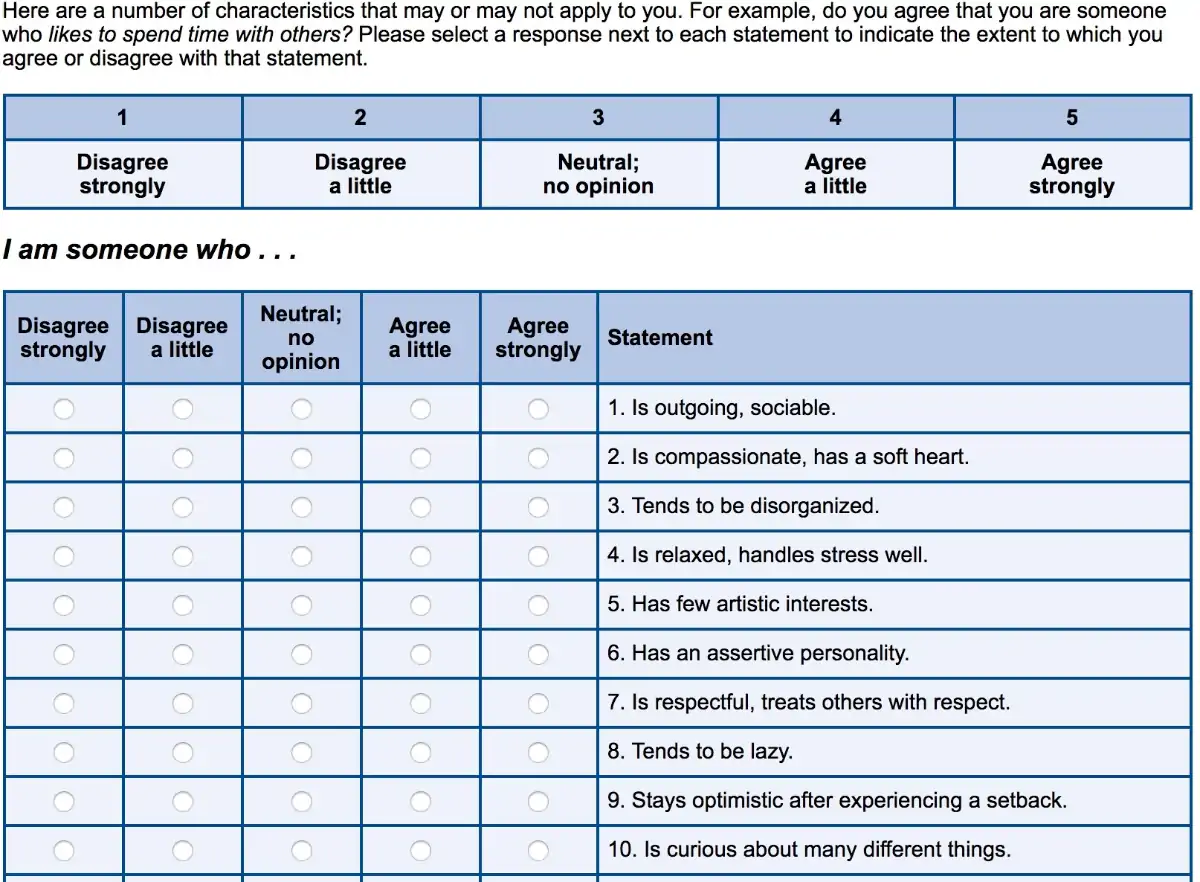
- admin
- May 3, 2018
- 6:43 am
I Took the Big Five Personality Test. The Answers Weren’t Surprising
If you read the earlier post I wrote about the Myers-Briggs Type Indicator, or MBTI, you know that, despite its popularity, I’m pretty skeptical of it as a diagnostic tool. And I’m not alone: an increasing consensus of psychologists criticize it for not being a statistically sound assessment of personality types. Nevertheless, it’s used in hiring, firing, and promotion decisions by big companies around the world because it gives results that managers feel like they can do something with.
The promising Big Five test
In FiveThirtyEight.com’s long article on personality tests, they focused on one test that psychologists do find promising: The Big Five, based on the so-called five-factor model (FFM) of personality. Despite my doubts, I’ve taken Myers-Briggs test before (INFP, checking in!) so I thought I’d see how the experience of taking the Big Five would compare, and find out whether I’d feel a shock of recognition at the results.
There are many Big Five tests out there
An important thing to keep in mind is that the Big Five isn’t copyrighted, so there isn’t a single canonical version of the test. Instead, various researchers have come up with different ways to assess how you exhibit the various factors that make up the FFM. Those factors are:
- Extraversion
- Agreeableness
- Conscientiousness
- Neuroticism (sometimes called negative emotionality)
- Open-mindedness (sometimes called openness to experience)
There are different scales out there that try to assess these qualities. There are also caveats about some of the ways the scores are presented. For instance, one of the scales used is called the Big Five Inventory, and the results on its website are based on a comparison to other people taking the test who have some of the same demographics.
The version of the test I chose was called the Big Five Inventory-2 (BFI-2), and it’s available on the website of Colby College psychology professor Christopher Soto, who helped develop it. Soto’s questionnaire does ask for fairly extensive demographic information, as well as some questions about your political beliefs, but those are for purposes of trying to see how BFI-2 assessments match up with those factors; they don’t affect the score you’re given.
Diving in to the questions
The test itself goes by relatively quickly — there are only sixty questions in the BFI-2, along with the aforementioned optional demographic and political questions. Each sentence is a terse sentence fragment meant to describe you: for instance, “Is compassionate, has a soft heart” or “Tends to be disorganized.” Crucially, you rate your answer to each on a five-point scale, from “Agrees Strongly” to “Disagree Strongly.” This is in contrast to the MBTI, where each question has an either/or response.
Figure 1. The Big 5 personality test by PersonalityLab.org.

One thing you notice when taking the test is that there are certain themes that recur, as you would expect — in essence, sometimes you get the same question asked in different ways. For instance, question 4, “Is relaxed, handles stress well” is definitely getting at the same thing as question 19, “Can be tense.”
You’re supposed to go with your gut response on this test, but it caused me to perhaps overthink things a bit and compare my answers to questions I thought were similar. (It may not surprise you to hear based on this that I scored relatively high on neuroticism.)
What are your numbers?
You receive your results right away at the end, and they’re substantially more complex than a simple four-letter MBTI type. For each Big Five factor, you’re given an overall rating between 0 and 100; each factor includes three more specific facets that have scores of their own.
While I’m not an academic equipped to assess the validity of the test, my immediate response to my results were that they were pretty accurate, in part because they were so much more granular than the MBTI types. For instance, Myers-Briggs pegs me as an introvert rather than an extrovert, which I suppose is true if I had to pick one. But I never felt that description entirely suited me. The BFI-2 put me in the middle of the pack on extraversion with a 44, with the facets digging deeper into what that means: I scored low on assertiveness, but high on energy level and right around the middle on sociability.
Where do you go from here?
Of course, a personality test is just a parlor game if you don’t come away with something you can do with the results. The Big Five researchers don’t claim that the results indicate something entirely genetic or innate; perhaps the answers will encourage you to work on things about yourself you want to change.
On the other hand, not everything about your personality is something you need to “fix”; maybe what you really want to understand is how you’re trying to pound a round peg into a square hole in your personal or professional life.
To give another example from my own results, my conscientiousness score was the middle of the pack, and the facets explained why: I scored high on responsibility but low on organization. Again, this resonates with my real life; I almost always meet my deadlines but often end up burning the midnight oil to do so, when better organization or time management could make my life easier. That means I might want to look into some productivity techniques that have worked for others — including hiring a virtual assistant who can take low-priority tasks off my plate.
Categorized
Posts you might also like...

6 Leadership Quotes on Delegation to Inspire You to Greatness
February 5, 2023

How a Delegative Leadership Style Improves Team Success
February 5, 2023

How to Use MOCHA to Delegate Effectively
February 5, 2023

